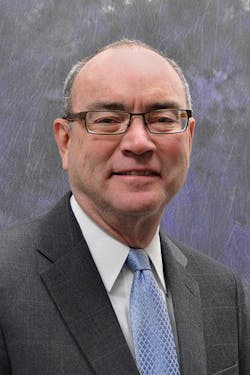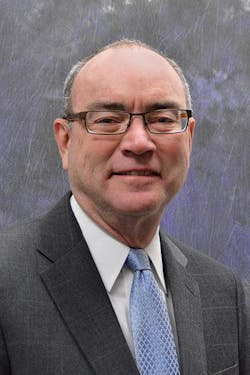Ramping up the “Toward Zero Deaths” policy effort
About five years ago I attended a transportation meeting hosted by the Swedish embassy in Washington D.C. that sought to spur a new strategic direction for global transportation networks – reducing traffic deaths down to zero.
[You can go here and here to read more about that effort.]
Now, the movement to make the Toward Zero Deaths (TZD) policy a concrete reality is being injected with some new blood, with the American Association of State Highway and Transportation Officials (AASHTO) officially signing up.“The TZD National vision brings together a wide range of organizations and individuals under a unified commitment to transform our nation’s traffic safety culture,” said Bud Wright (seen at right), AASHTO’s executive director, in a statement. “Everyone has to be part of the solution – including the nation’s educators, roadway designers, engineers, law enforcement officers and motorists.”
What’s important for trucking to take away from this broad based “TZD” effort – one created by a steering committee cooperative that includes a host of organizations such as Commercial Vehicle Safety Alliance (CVSA), Governors Highway Safety Association (GHSA), International Association of Chiefs of Police (IACP), and of course the U.S. Department of Transportation (DOT) – is that it’s going to influence a broad swath of policy initiatives where the movement of people and freight is concerned, in this country and worldwide as well.
“We embrace the vision of Toward Zero Deaths; it provides an overarching and common vision that drives and focuses our efforts to achieve our shared goal to eliminate injuries and fatalities on our roadways,” noted Transportation Secretary Anthony Foxx (at left) in a statement.
“[We] willFor example, the new “TZD Plan” being rolled out this week is going to encourage the fields of engineering, law enforcement, education and emergency medical services (EMS) where they connect to transportation to adopt initiatives and safety countermeasures designed to save lives, AASHTO’s Wright emphasized..
“This … is a perfect example of why partnerships are so critically important,” he added.
For instance, the TZD plan includes initiatives covering:
- Safer drivers, passengers and pedestrians
- Safer infrastructure
- Safer vehicles
- Enhanced emergency medical services and response
- Improved management of traffic safety programs
“As leaders in the transportation industry, we have a duty and a responsibility to do what we can to accelerate the efforts to save lives on our nation’s roadways,” he said in a statement. “Our mission is to one day rid the nation of all traffic fatalities and the TZD National Strategy will help us reach that goal faster.”
It’s an ambitious effort to say the least and one with a very long time-horizon – 25 years to be exact, with only five of those years officially accrued by now.
Yet it’s an effort that no doubt will run afoul of John Q. Public at some point in some fashion – an issues I’ve touched on before in this space.
For while it’s easy to write more rules and formulate more policies aimed at improving highway safety, it’s quite another thing entirely to get people to follow them.



